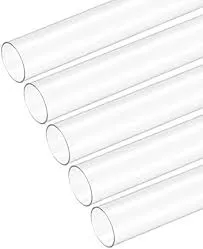Oct . 11, 2024 15:43 Back to list
water pipe fittings
Understanding Water Pipe Fittings Essential Components for Plumbing Systems
Water pipe fittings are indispensable components in any plumbing system, playing a crucial role in directing, controlling, and managing the flow of water through pipelines. These fittings connect various segments of piping, allowing for the seamless transition between straight lines, bends, and branches. With numerous types and materials available, understanding water pipe fittings is essential for both DIY enthusiasts and professionals in the plumbing industry.
Types of Water Pipe Fittings
The diversity of water pipe fittings can be categorized based on their function and design. Some of the most common types include
1. Elbows These fittings are used to change the direction of the pipe, typically in 45-degree or 90-degree angles. Elbows are vital in navigating obstacles and adapting the pipe layout to fit a specific space.
2. Tees Shaped like the letter T, these fittings facilitate the branching of a pipeline. A tee allows water to flow into two different directions, which is crucial for distributing water to multiple fixtures.
3. Couplings Used to connect two sections of pipe, couplings can be either threaded, slip, or compression types. They ensure secure and effective joins to maintain water pressure and prevent leaks.
4. Adapters These fittings allow two pipes with different diameters or threading types to connect. Adapters serve a key role in enhancing the versatility of plumbing systems.
5. Caps and Plugs Caps are used to seal the end of a pipe, while plugs block off a section of the pipe, preventing water flow. These fittings are essential for maintenance and repair work.
water pipe fittings

Materials Used in Water Pipe Fittings
Water pipe fittings come in various materials, each with its advantages and applications
- PVC (Polyvinyl Chloride) Popular in residential plumbing, PVC fittings are lightweight, resistant to corrosion, and easy to install. They are typically used for cold water applications.
- CPVC (Chlorinated Polyvinyl Chloride) This material can withstand higher temperatures, making it suitable for both hot and cold water systems. CPVC fittings are also resistant to corrosion.
- Copper Known for durability and longevity, copper fittings are often used in high-end plumbing systems and are suitable for hot water applications. However, installation can be more complex and costly.
- Stainless Steel This material offers excellent resistance to corrosion and high pressures, making it ideal for industrial settings or outdoor applications.
Importance of Quality Fittings
Investing in high-quality water pipe fittings is crucial for ensuring the longevity and efficiency of a plumbing system. Poorly made fittings can lead to leaks, reduced water pressure, and costly repairs. Regular inspections and maintenance of fittings are also necessary to prevent failures over time.
In conclusion, water pipe fittings are vital components of any plumbing system, serving multiple functions and coming in various materials. A good understanding of these fittings helps ensure a robust, leak-free piping system that meets all water distribution needs. By choosing the right fittings and maintaining them properly, homeowners and businesses can ensure their plumbing systems function effectively for years to come.
-
PVC Transparent Sheet Roll - Durable & Flexible PVC Plastic Sheet Roll for Industrial & Home Use
NewsJun.24,2025
-
High-Quality PVC PPR Pipes and Fittings Durable ERA PPR Solutions
NewsJun.10,2025
-
High-Quality Large HDPE Sheets & Large Diameter PVC Pipe Durable Large PVC Pipe Supplier
NewsJun.10,2025
-
High Density Polyethylene Cutting Board - Durable & Food Safe
NewsJun.09,2025
-
3 Inch PVC Pipe for Durable Irrigation Affordable & Reliable
NewsJun.09,2025
-
Premium PPR Plastic Water Pipe Fittings - Durable & Leak-Free
NewsJun.09,2025

